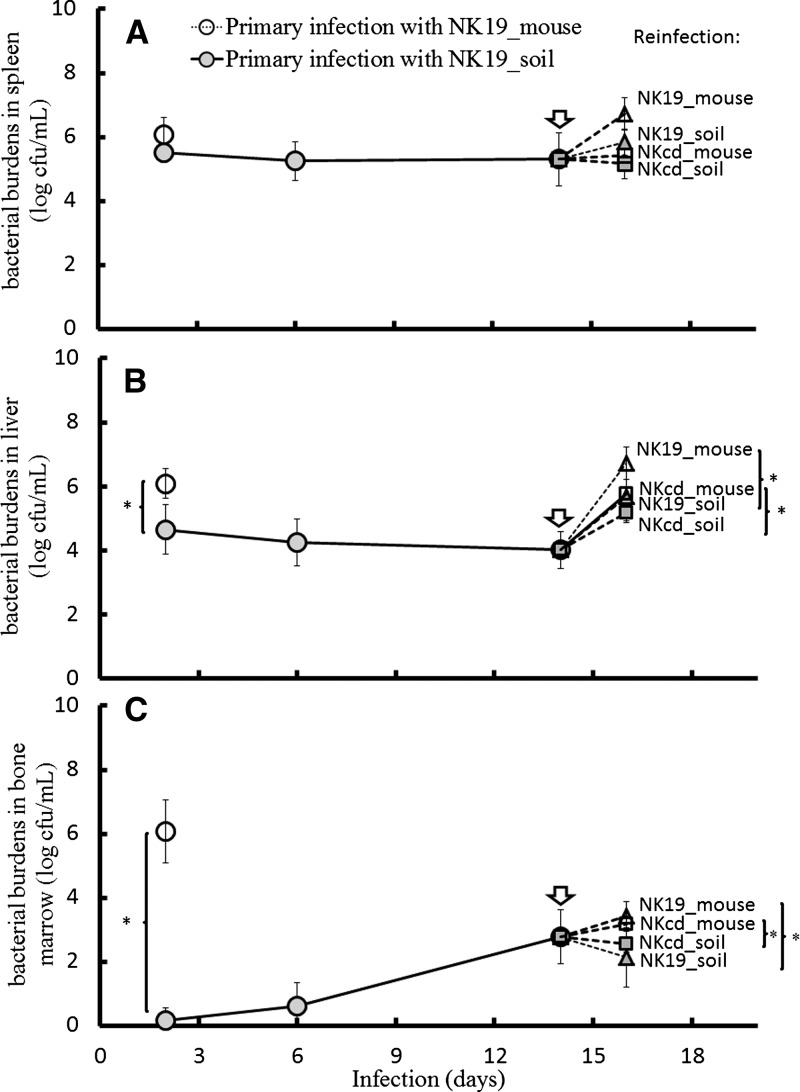Figure 8.
Bacterial burden in organs. The number of Burkholderia pseudomallei present in the spleen (A), liver (B), and bone marrow (C) were measured in mice infected with NK19_mouse (white circles) and NK19_soil (gray circles) on Day 2, Day 6, and Day 14 post-infection. Only one time point (Day 2 post-infection) is presented for the mice that were infected with NK19_mouse because all the mice died by Day 4 post-infection. Fourteen days after the primary infection with NK19_soil, the infected mice were reinfected with B. pseudomallei (NK19_mouse, white triangles; NKcd_mouse, white squares; NK19_soil, gray triangles; and NKcd_soil, gray squares). The data from the primary infection experiments using NKcd_mouse versus NKcd_soil are not shown because the pattern of bacterial burden in the organs for each condition was similar to the experiments shown (primary infection with NK19_mouse versus NK19_soil). The limit of detection was 10 cfu/ml in the spleen (∼670 cfu/g), liver (∼40 cfu/g), and bone marrow (∼10 cfu/one femur). The symbol (*) signifies P < 0.05.

